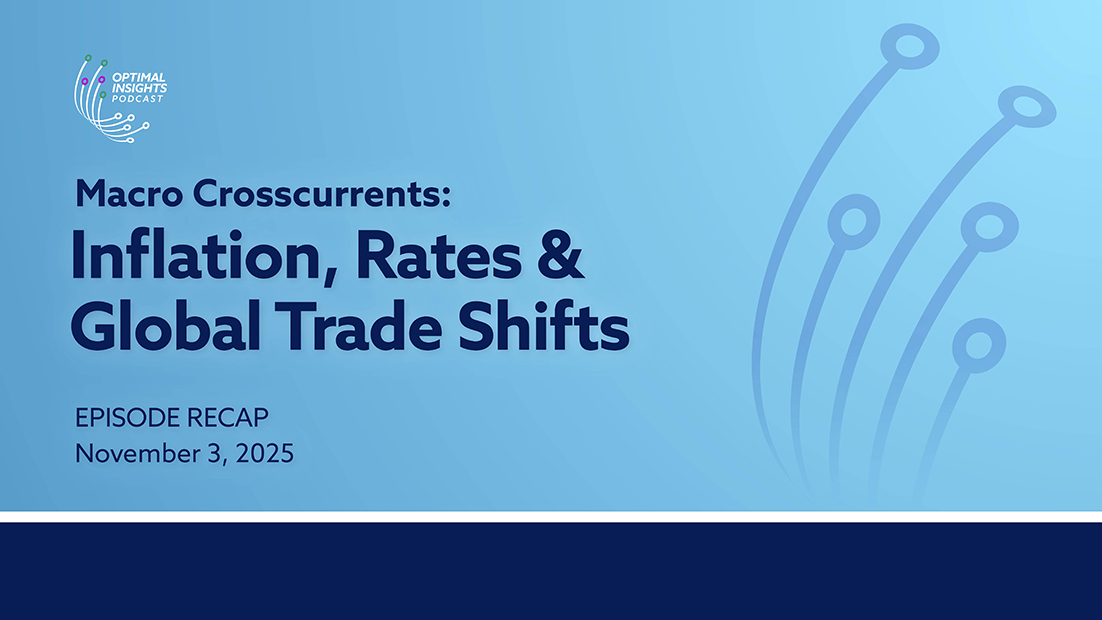
As the industry braces for potential year-end volatility, the latest episode of Optimal Insights delivers a timely and nuanced analysis of the mortgage landscape. Hosted by Jim Glennon, with insights from Alex Hebner and Kevin Foley, this week’s discussion centers on the Federal Reserve’s recent moves, labor market ambiguity, and the evolving regulatory environment. Each of these factors carries significant implications for mortgage professionals.
Here’s what you need to know this week.
Market Pulse: What You Need to Know This Week
Despite a quarter-point rate cut by the Fed, mortgage rates have ticked upward. The OBMMI sits at 6.15 and the 10-year Treasury yield has climbed to 4.11. Lock volumes remain robust, with purchase activity leading the way.
Key Trends and Takeaways:
Fed Commentary Sends Mixed Signals: Chairman Powell’s “far from it” remark regarding future rate cuts unsettled markets and recalibrated expectations for December and beyond.
Labor Market in Flux: With limited government data due to the shutdown, corporate layoffs from major brands like Meta, GM, and Target dominate headlines, though unemployment metrics remain relatively stable.
AI and Borrowing Costs Collide: The simultaneous rise of AI investment and higher interest rates has reshaped hiring and capital expenditure strategies across industries.
Tariff Hearings Begin: The Supreme Court’s review of tariff legality could have sweeping effects on trade policy and inflation expectations.
The Fed’s Messaging and Mortgage Market Implications
The Federal Reserve’s recent rate cut was expected, but the real story lies in the post-announcement press conference. Powell’s cautionary tone, emphasizing that another cut in December is “far from” guaranteed, sent a ripple through the markets. The CME’s rate cut probability dropped sharply, extending uncertainty into mid-2026.
This ambiguity has direct consequences for mortgage pricing. The Fed’s desire for flexibility amid incomplete data reflects a broader tension: balancing market expectations with economic realities.
The discussion also touched on historical parallels, referencing Edward Chancellor’s The Price of Time and Andrew Ross Sorkin’s 1929, drawing comparisons between past and present Fed strategies. The takeaway from the team is that today’s Fed is more cautious, less interventionist, and deeply aware of its influence on asset prices and investor sentiment.
Actionable Advice for Mortgage Professionals
Monitor FHFA Developments: Potential changes to LLPAs, G-fees, and VantageScore integration could reshape pricing models. Stay alert for midweek updates or emergency announcements.
Prepare for Regional Divergence: The K-shaped housing recovery, where affluent areas thrive while others lag, may prompt more granular loan limit adjustments. Consider geographic nuances in your strategy.
Stay Flexible on Rate Expectations: With the Fed signaling uncertainty, avoid overcommitting to rate forecasts. Build contingency into your pricing and hedging models.
Watch Trade Policy Closely: Tariff rulings could impact inflation and supply chains, indirectly influencing mortgage rates and housing affordability.
This week’s Optimal Insights episode underscores the complexity of today’s mortgage environment. From Fed policy to labor dynamics and regulatory shifts, the landscape is anything but static.
Tune in to Optimal Insights for the latest perspectives from the experts at Optimal Blue. Available on all major podcast platforms: https://optimal-insights.captivate.fm/listen
The views and opinions expressed in this program are those of the speakers and do not necessarily reflect the views or positions of Optimal Blue, LLC.